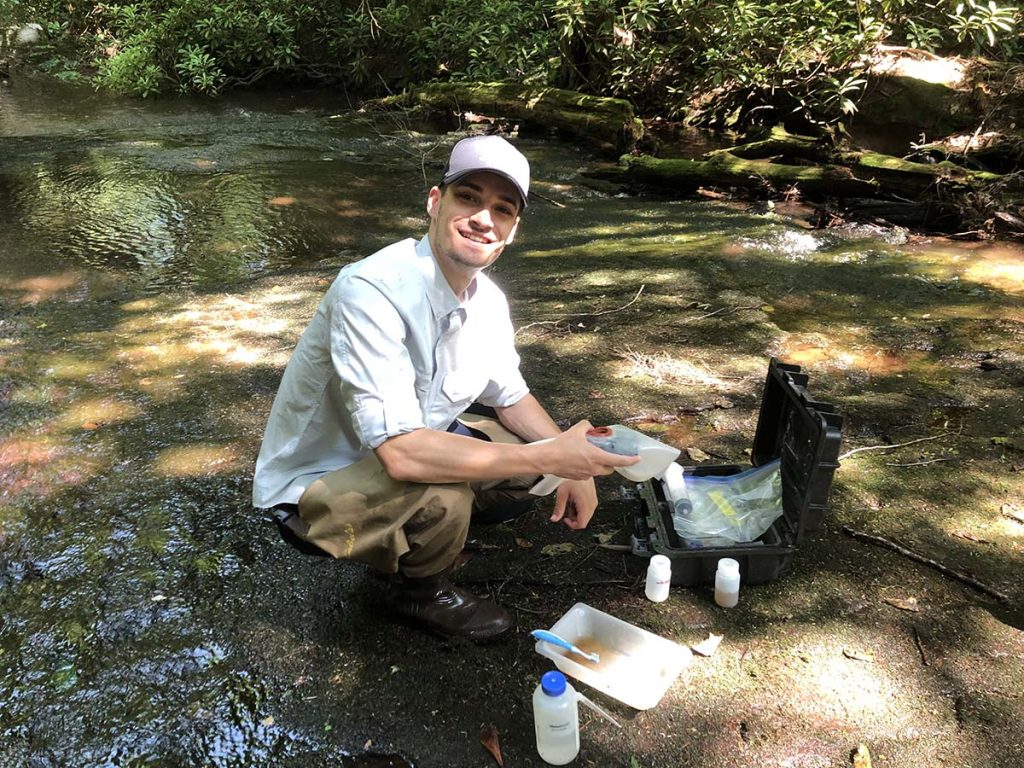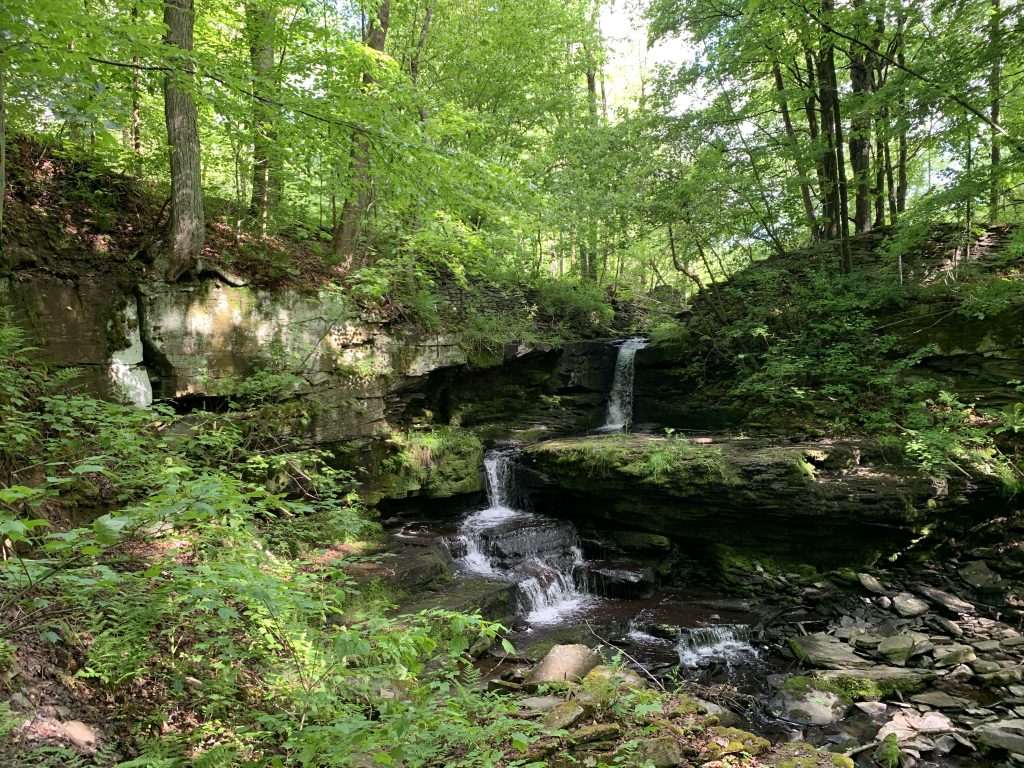
Dozens of projects awarded $17.3 million from Delaware Watershed Conservation Fund
| October 3, 2024
While the former residents of Thompson’s Beach gave up long ago on the effort to rebuild their homes, Alek “Capt. Al” Modjeski is hopeful that stabilizing some of the shoreline could help rebuild a coastal connection for neighboring communities along the New Jersey side of the Delaware Bay.
Next spring, the American Littoral Society will work to add up to 45,000 cubic yards of sand to the shoreline, extending the suitable habitat for spawning horseshoe crabs that support another kind of tourism-driving coastal resident: Migrating shorebirds.
“To us, it’s not just about restoring the habitat for horseshoe crabs and shorebirds. It’s restoring the community’s connectivity to the bay,” said Modjeski, a coastal ecologist and the society’s habitat restoration program director. “It was an early resort town in World War II, and it was one of the best fishing places ever. A real gem for Delaware Bay.”
The $3 million beach restoration project at Thompson’s Beach in New Jersey — which also includes extensive plans to help local, underserved students experience the bay shore environment for maybe the first time — is just one of 45 projects across Delaware, New Jersey, New York and Pennsylvania that recently received millions of dollars in grant funding from the federal Delaware Watershed Conservation Fund through the National Fish and Wildlife Foundation.
From the forested headwaters hundreds of miles away from the Delaware Bay down to the miniscule eggs gobbled up along the coast, countless species and communities rely on the health of the 13,539-square-mile Delaware River Watershed.
Studying the headwaters
Sometimes looking at the smallest organisms in a system can help inform the health of everything else. At least that’s the case for some scientists studying water quality and the microscopic aquatic organisms, like Tanya Dapkey of the Academy of Natural Sciences of Drexel University.
Thanks to $360,000 from this grant program and another $365,800 in matching funds, Dapkey and Steven Rier of Commonwealth University – Bloomsburg will spend the next couple of years studying and monitoring temperature fluctuations as well as genetic diversity across 50 sites at headwater streams in the watershed.
“There are a lot of important processes that occur in streams,” explained Rier, noting that leaf litter from forests actually feed stream systems. It’s also a factor that’s not often assessed but can provide valuable information about the health of the stream.
As the frequency of flood events and temperature changes continue to be affected by climate change, researchers like Dapkey and Rier are trying to assess how those streams react.
Data collected by the Drexel team will help inform a predictive model that can explore how temperature fluctuations in headwaters can impact things downstream.
“If you really want to protect a watershed, you have to focus on these headwater streams,” Rier said. “When it comes to things like climate change, having an area forested along the stream …. is probably the best thing we can do.”
At Willowemoc Creek in New York — the “Whelenaughwemack” in the native Lenni-Lenape language — the idea of the interconnections between forests surrounding those headwaters and the overall health of the Delaware River Watershed is top of mind for Jesse Vadala with Trout Unlimited.
The translation of the creek’s name actually means “the kettle that washes itself clean,” as “referenced by Catskill legend, Ed Van Put, by way of George Van Siclen in an 1880 article in Forest and Stream,” Vadala shared in an email.
“Obviously these rivers were loved,” he said in a phone interview with Delaware Currents, noting that the native connection will be honored with signage through the project, which aims to remove the historical manmade engineering, like dams and undersized culverts, that has interrupted the natural flow of waterways in order to make way for industry.
The nonprofit received $779,300 in grant funding this round, which will be met with another $780,800 for a project to reconnect 9.5 miles of stream in the East Branch Delaware River and Willowemoc Creek.
“The real naturalized beauty of the Catskills is deep in those wooded forests,” he said. “The secret to their continuation is those headwater streams.”

Across the watershed
These projects join dozens of others receiving support since the Delaware Watershed Conservation Fund was created in 2018.
Since then, 239 projects throughout the watershed generated another $100 million in matching funds, according to Christina Ryder, the Delaware River Basin restoration program manager for the U.S. Fish & Wildlife Service.
“There’s lots to be proud of,” Ryder said. “The Delaware River is so important economically, socially, historically, culturally.”
While NFWF administers the grant program, funding is provided directly from Congress to USFWS’s Delaware River Basin Restoration Program. This year’s grant awards were also supported by USDA’s Natural Resources Conservation Service, AstraZeneca and the William Penn Foundation, according to a NFWF press release.
In addition to restoration and monitoring projects related to shorebirds and horseshoe crabs along the Delaware Bay, as well as those upstream projects by Drexel and Trout Unlimited, five projects in Delaware will include shoreline work along the Christina River Waterfront and marsh restoration in the state’s two national wildlife refuges, as well as conservation planning and green stormwater infrastructure in Wilmington.
In New Jersey, 10 other projects will help inform management and restoration strategies for American oystercatchers,
In New York, another stream restoration and access project aims to reconnect 4.5 miles of waterways and their neighboring communities.
In Pennsylvania, over a dozen projects aim to tackle stream restoration, enhancing thousands of acres of forest habitat, expanding public access to natural spaces and more.
Several projects cross state boundaries propose to study everything from invasive mud snails and saltmarsh sparrows to harmful algal blooms and climate change assessments.
“The total conservation impact across the watershed … is so impressive,” Ryder said, applauding the $172 million invested so far. “It shows the commitment from our partners to get this stuff done.”
Down by the bay
Captain Al, as Modjeski is better known, said you can still see the roads that ran through Thompson’s Beach beneath the sand.
It’s been about a decade now since crews removed 965 tons of rubble — remnants of old homes, roads, pilings and other debris that has been slowly eroded by coastal forces since the Great Flood of 1950.
“All that is now in Thompson’s is open space, pretty much,” he said. It was after Hurricane Sandy in 2012, he said, that the American Littoral Society embarked on restoration projects along several Delaware Bay beaches, including Thompson’s.
From beaches and berms to vegetated dunes and oyster reef systems, the organization now has the permits and studies in hand to restore any beach in Cape May or Cumberland County, Modjeski said. But it’s not just about the birds and horseshoe crabs, which provide incredibly nutritious eggs for avian visitors to feast on along extensive migration routes.
“There’s kids that live within 20 minutes of the bay and have never seen it,” he said, noting that the grant funding will support about eight field trips for local students who will get to learn more about the bay shore habitats as well as fishing and tagging horseshoe crabs.
What’s happened regarding the retreat from Thompson’s Beach isn’t a one-off, though, he said. There are other former Delaware Bay communities, like Money Island, that now only exist as open space owned by the state.
From restoring coastal habitats and community connections to understanding the fluctuations in natural systems and the complex impacts of climate change, what happens across a watershed as expansive as the Delaware River’s can have a ripple effect across ecosystems and communities.
“We always have more demand than we have resources to commit — that is a great indicator of how much need there is,” Ryder said. “I think another seven years [of program funding] can get us closer to the needs in terms of accessibility to nature and drinkable water for perpetuity.”
For a full list of this year’s grant awards, go to https://www.nfwf.org/sites/default/files/2024-08/nfwf-dwcf-20240819-gs.pdf.







